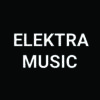Call for Submissions – Special Issue: Computer Music for High-Density Loudspeaker Arrays
Public performances of computer music employing high-density loudspeaker arrays can convey powerful spatial experiences that are not available in home stereo or headphone listening. However, the development and dissemination of spatial aspects of computer music have been hindered by a stereo bias that has pervaded both commercial music distribution formats and institutional practice. The vinyl record, cassette, MiniDisc, and CD all enforce the stereo format. Even today, most festivals of computer music that present works in even modest multichannel formats such as octophonic, still limit musical submissions to the stereo format.
Despite the above-mentioned problems of dissemination, spatial aspects have long been an area of focus for electronic and computer musicians. Early examples of electronic music projected on high-density loudspeaker arrays (HDLAs), which we define here as systems addressing 24 or more independent loudspeakers, include music for the Phillips Pavilion at the Brussels World’s Fair in 1958, and music for the spherical auditorium at the Osaka Expo in 1970. Both the Phillips Pavilion and the spherical auditorium were temporary structures, dismantled shortly after the performance event. Unlike most contemporary computer music research, which can be pursued on personal computers more or less anywhere, work with HDLAs still challenges researchers with the basic problem of finding a viable workspace.
Fortunately, an increasing number of computer music research spaces housing HDLAs have become available, the majority of which were built in the 21st century. A few pioneering music festivals have recently emerged such as BEAST FEaST at Birmingham University, and inSONIC at ZKM, where music is selected for its suitability for performance over resident HDLAs. The Spatial Music Workshop at Virginia Tech invites participants to develop computer music for a 138-channel HDLA. The transition from distribution of music on a physical medium to distribution by digital download allows for complete freedom of the choice of format. While commercial net labels still favor stereo, this is no longer an inherent limitation of the medium. Informal distribution of computer music in upwards of 100 channels is already taking place between institutions that support musical performance on HDLAs. As the means for composing with HDLAs and disseminating the resulting music increases, it seems appropriate to present the most promising directions for this growing area of computer music research.
This call for submissions for a special issue of the Computer Music Journal focuses on recent developments and future prospects of computer music composed for high-density loudspeaker arrays.
Relevant topics include, but are not limited to:
* New methodologies for composing music using HDLAs
* Strategies for presenting computer music in a variety of HDLA systems
* Aesthetic approaches to spatialization for HDLAs
* Cognitive aspects of listener apprehension of HDLA-based music
* Sonification using HDLAs
* Reports on the design and use of mobile HDLA systems
* Reports on recent developments in wave field synthesis
* Room acoustics simulations using HDLAs
* Speaker design for HDLAs
* Software design for HDLAs
In addition to papers, we invite brief statements on the nature and prospects of computer music for HDLAs. We welcome a wide variety of aesthetic, technical, sociological, and other perspectives. A selection of these statements will be published in a special Forum section.
Deadline for paper submission is January 30, 2016. The issue will appear in 2016.
Submissions should follow all CMJ author guidelines (http://www.mitpressjournals.org/page/sub/comj),except that manuscripts should not be submitted online at cmjdb.com. Instead, submissions and queries should be addressed to
<ericlyon@vt.edu>, with the subject starting with [CMJ HDLA Computer Music].

